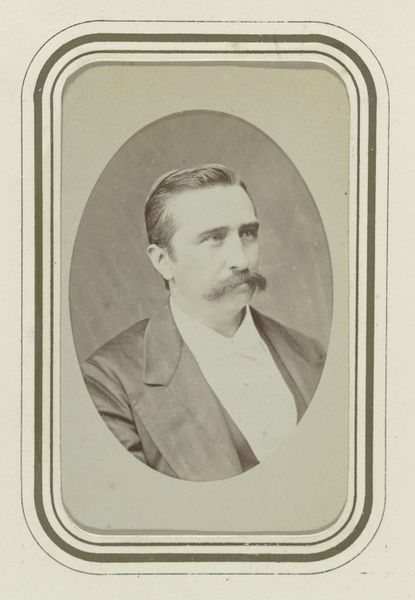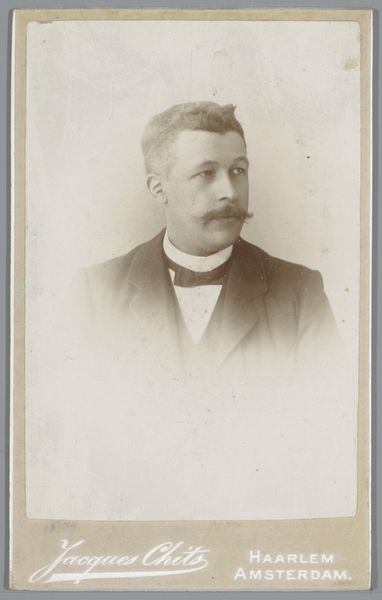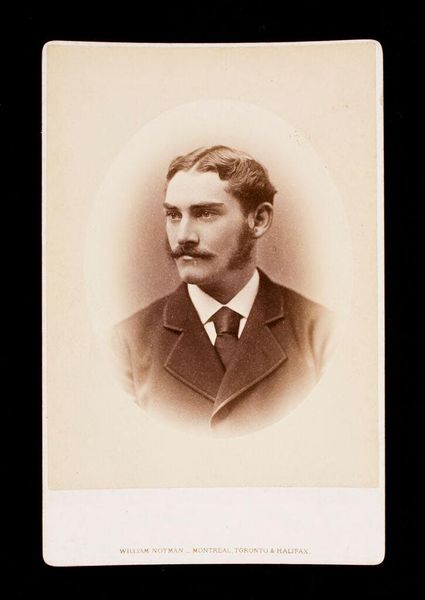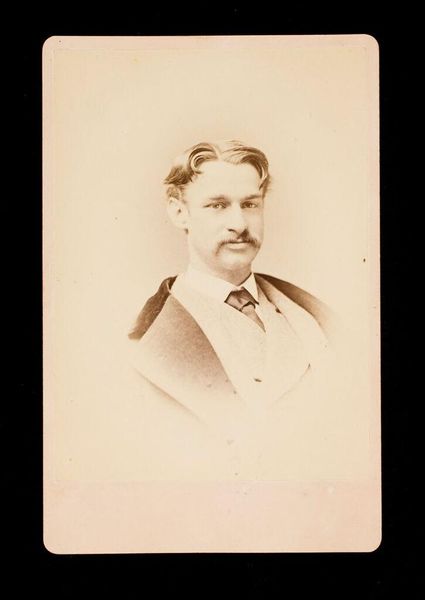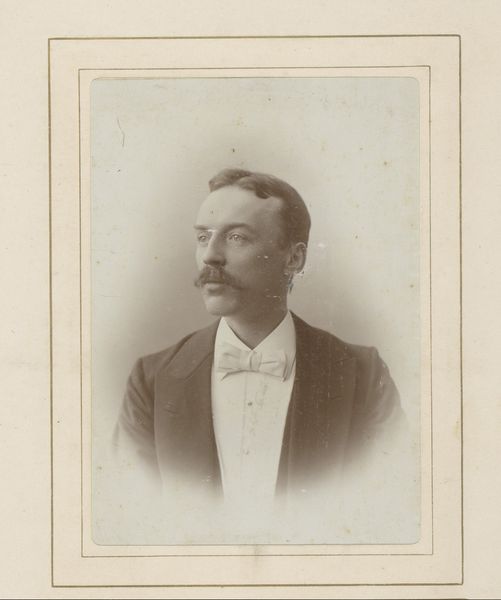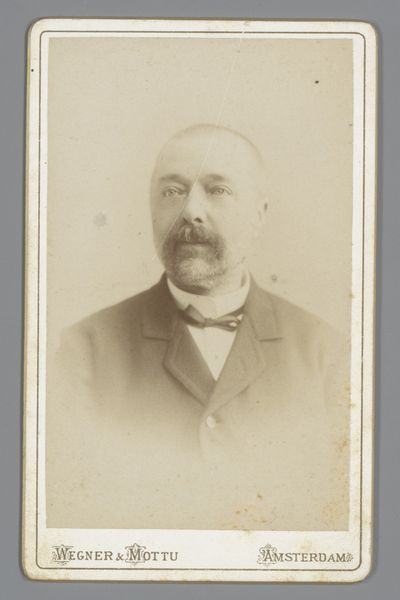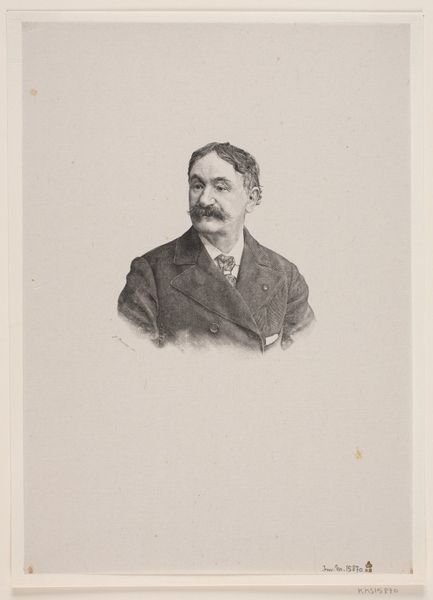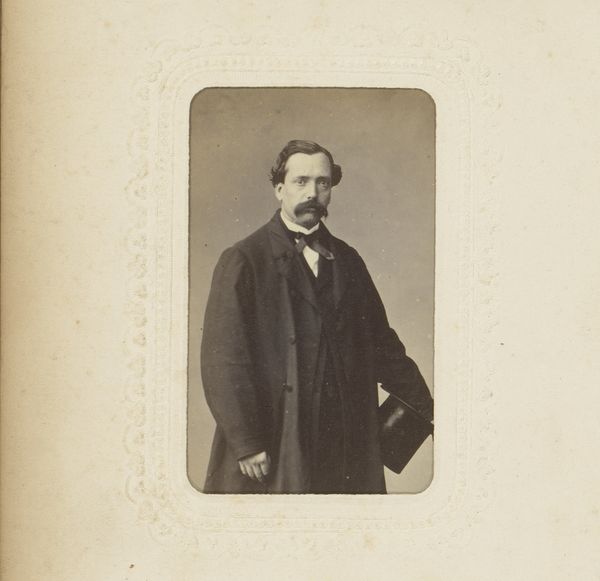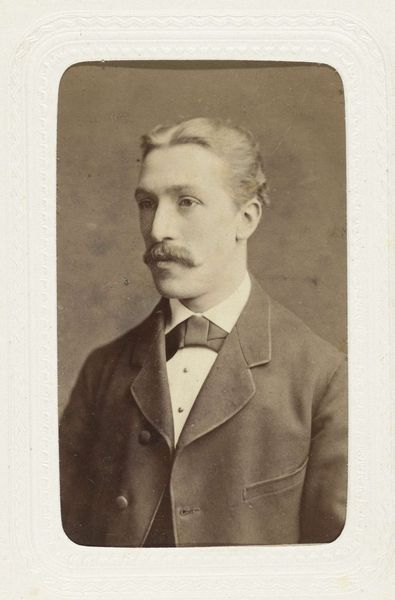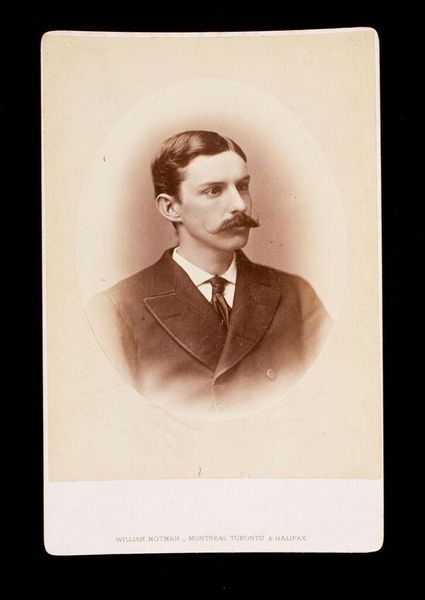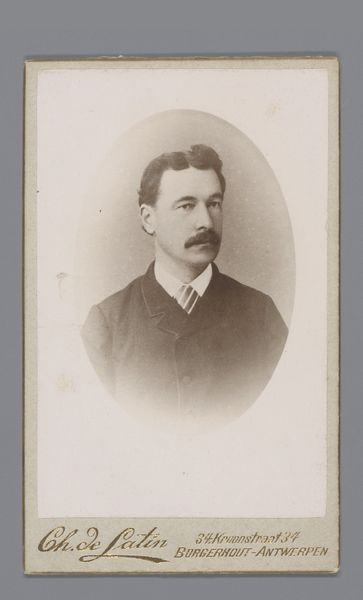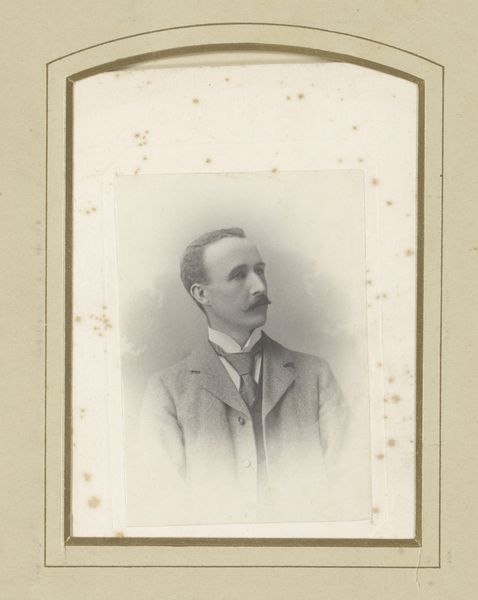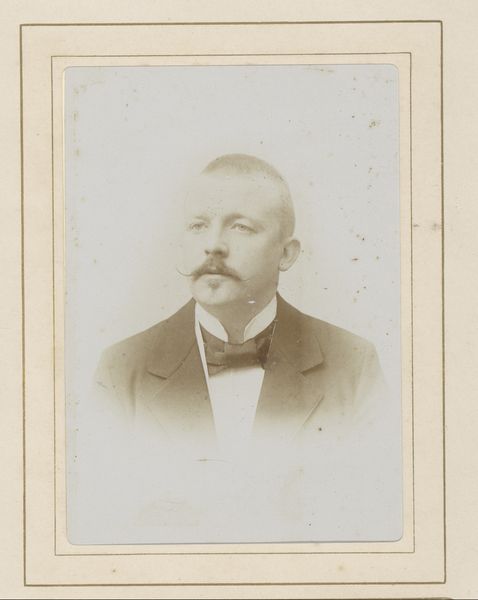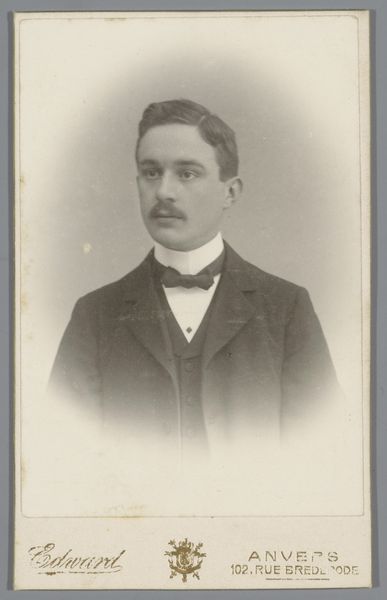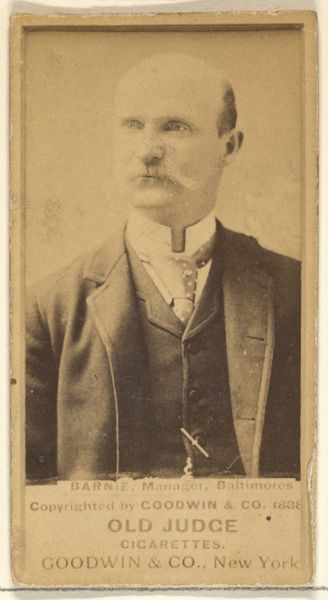
Portret van P.C. Plugge, hoogleraar in de faculteit Geneeskunde aan de universiteit van Groningen 1860 - 1864
0:00
0:00
daguerreotype, photography
#
portrait
#
daguerreotype
#
photography
#
historical photography
#
academic-art
Dimensions: height 102 mm, width 67 mm, height 533 mm, width 332 mm
Copyright: Rijks Museum: Open Domain
This photograph of P.C. Plugge, professor in the Faculty of Medicine at the University of Groningen, was created by Johannes Hinderikus Egenberger. Here, Plugge dons the attire of the mid-19th century—a dark jacket, vest, and a neatly tied bow tie. These garments, ubiquitous in their time, transcend mere fashion. They signify a transition in the concept of the public persona. The dark suit, popularized by Beau Brummell in the 19th century, becomes emblematic of the professional class, a stark contrast to the ornate and flamboyant attire of previous eras. We find a similar shift in the use of clothing during the Renaissance, where the Medici family adopted dark, understated garments. This choice symbolized their power through wealth rather than ostentation. The motif recurs in the 20th century in minimalist architecture and design. The simple suit and the reduction of ornamentation signal a psychological move towards functionality and efficiency, echoing a collective desire to strip away excess and reveal essential forms. The suit transforms across time from a symbol of religious austerity to bourgeois efficiency, evolving from a practical garment to an unconscious expression of societal values.
Comments
No comments
Be the first to comment and join the conversation on the ultimate creative platform.
